Does Russia choose to name things that make them sound like a bad guy, or does our inherent Anglosphere assignment of Russians being bad guys make things sound that way?
I’m not necessarily sure, but Kalashnikov Concern sounds like some form of a private military group doing shady things.
In reality, Kalashnikov Concern is just the Smith & Wesson or Sig Sauer of Russia. They produce firearms and are jointly owned by both the Russian government and private investors.
Today we dig deep into the history of Kalashnikov Concern, and believe it or not, it starts well before 1947 and the Kalashnikov rifle.
Table of Contents
Loading…
What is the Kalashnikov Concern?
What’s a Concern exactly?
That’s a good question because it’s not a term I was familiar with. It turns out it’s a Euro-centric term for a type of business group that results from a merger of several independent companies.
These companies are a single entity and operate under a unified management system while potentially making a wide variety of items or providing various services. Jeep, Chrysler, Dodge is an example of a Concern.

It is kind of like when rock stars form a supergroup.
So, who makes up the Kalashnikov Concern? Good question. Three companies — Kalashnikov, Baikal, and Izhmash. The Concern is headquartered in Moscow and Izhevsk and produces a massive amount of small arms.
Approximately 95% of Russian small arms are made by the Kalashnikov Concern, according to Rostec and Kalashnikov’s website. This includes domestic production for the Russian military and police forces as well as export sales.
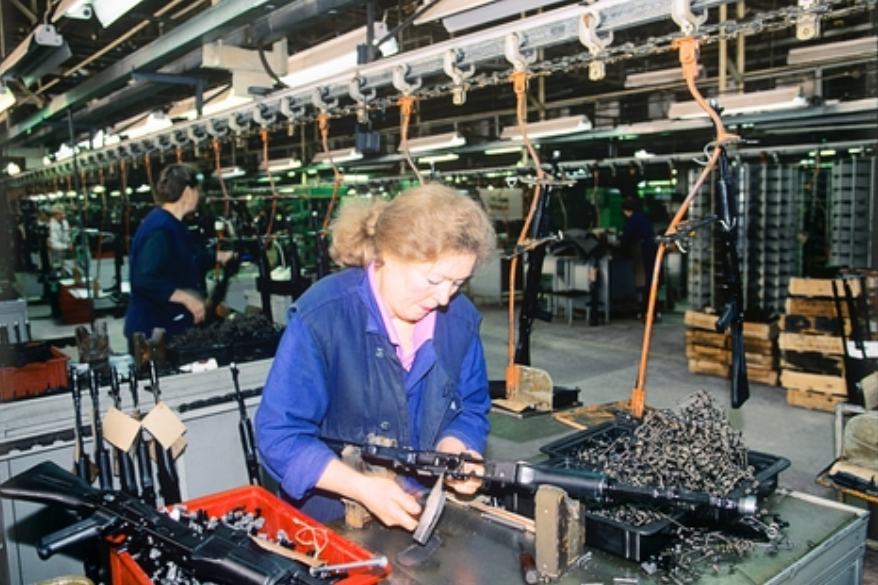
How did this behemoth of a company become what it is today? Well, to answer that question, we gotta get our Delorean to 88 miles per hour and travel back to Russia in 1807.
The Beginning of Kalashnikov
Emperor of All Russia is a sick title because Russia is massive.
As you’d imagine, when the Emperor of All Russia, Alexander, wanted an armory, he got one. By decree, he ordered the formation of an armory in the city of Izhevsk.
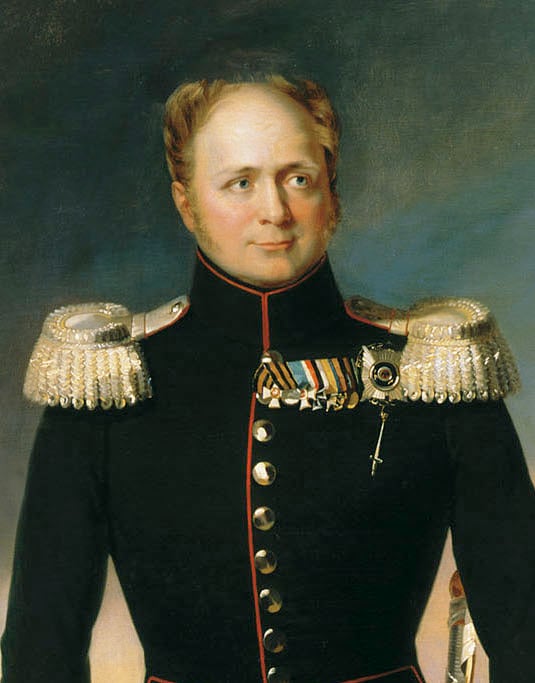
Izhevsk was chosen because of its proximity to ironworks. Logistically getting metal to an arms facility is important, so the location made sense. Also, the river and later dam in the city ensured the machines could run.
The armory would be staffed by a combination of Russians and foreign arms specialists to help guide Russian hands.
Before the armory construction even finished, they were cranking out guns. In 1807 the new armory produced the newly developed No. 15 17.7mm muskets and began mass production the next year, making 6,000 of these weapons in 1808.

They went on to develop rifled weapons, pistols, carbines, and blunderbuss shotguns in 1809.
Production Increases
Expansion was rapid, and it got even heavier when conquering Frenchmen got froggy in 1812.
Napoleon was making the classic blunder of invading Russia, and the Russians were ready to pull his card.
By 1812 the armory still hadn’t been finished, but the gunsmiths put their backs into it to ensure that the only resource Napoleon’s men took home was lead. In 1814 the plant produced 10,000 guns and nearly 2,500 swords.
In 1817 the main armory wrapped up construction, and this massive building consisted of four floors. According to the M. Kalashnikov Small Arms Museum, it was the first multi-story industrial building in Russia. Production started on the bottom floor and rose floor to floor until arms were completed on the 4th floor.
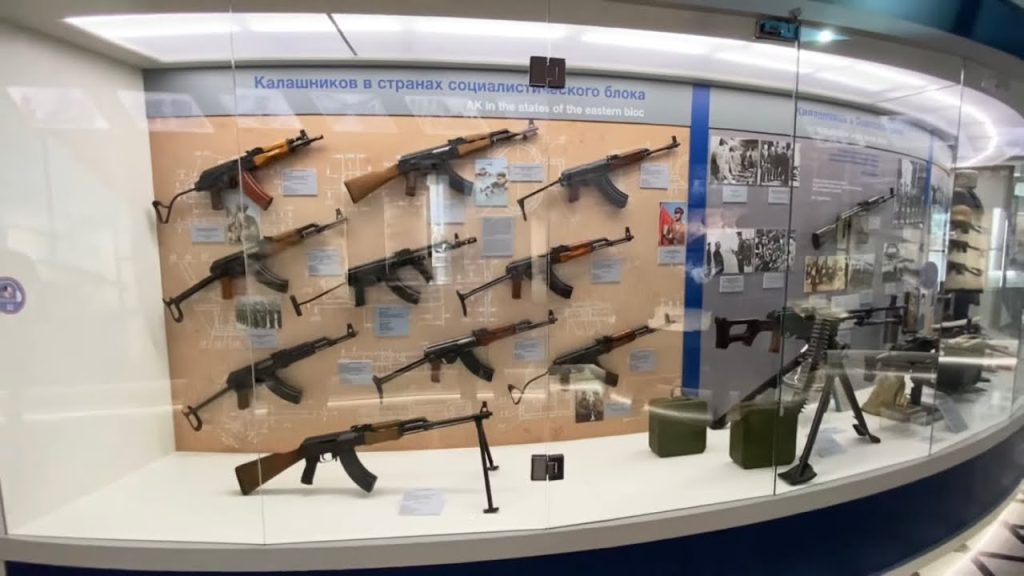
By 1830 the armory had reached its design capacity and was producing 25,000 flintlocks and five thousand swords. As time passed, the factory upgraded and developed various weapons, including smoothbore shotguns and, later, mass-produced rifles.
Modernization
Starting in 1867, the plant modernized and began producing breech-loading rifles for the Russian Army. Production of Berdan and Krnka rifles began with the Berdan being the more modern option.
The upgrades saw steam engines, new machinery, and an open-hearth furnace to produce modern firearms at a faster rate. By 1870 the plant produced more weapons than the Tula and Sestroretsk plants combined.
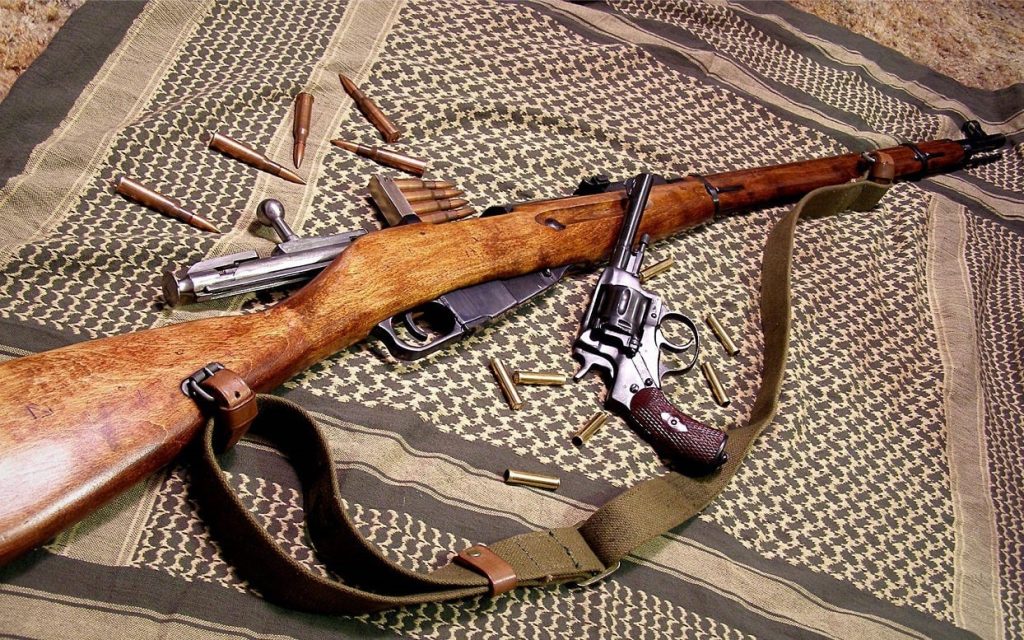
In 1891 we got a rifle we all know and love, the Mosin-Nagant — also known as the 3-line rifle of the Mosin system. This leads us to the 1900s and the Great War.
The Great War (and the Russian Civil War)
This time period gets real dark for the Russian Empire…
For the First World War, the Izhevsk plant produced 1.4 million Mosin Nagant rifles for the war effort. Around this time, the IGSF got its own design bureau.
This took the plant from a simple manufacturing hub to an all-in-one brain trust that both designed and produced weapons. The Izhevsk plant would become one of the most productive factories in the world.
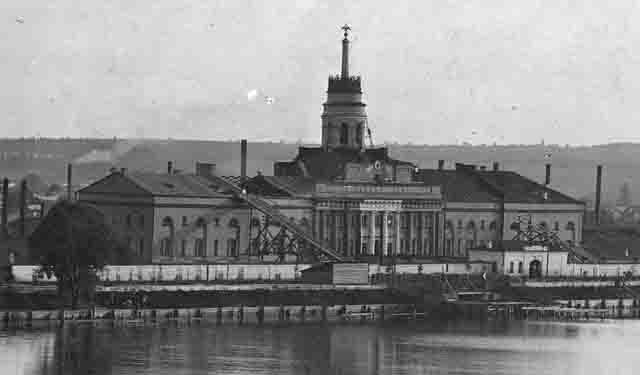
The Russian Civil War occurred, the Tsar was killed, and a new government arose during and in the wake of the first World War.
Soviet Union
By 1922 the Soviet Union took charge, and things started changing. Oddly enough, for the factory, they changed for the better.
They began producing more hunting guns, starting the history of the Baikal company and their now-storied shotguns.
These modern changes created a requirement for better-trained personnel, and the Izhevsk Tech School emerged. Knowledge and techniques were now passed directly to students rather than through the ole on-the-job training, producing workers trained to a uniform standard.
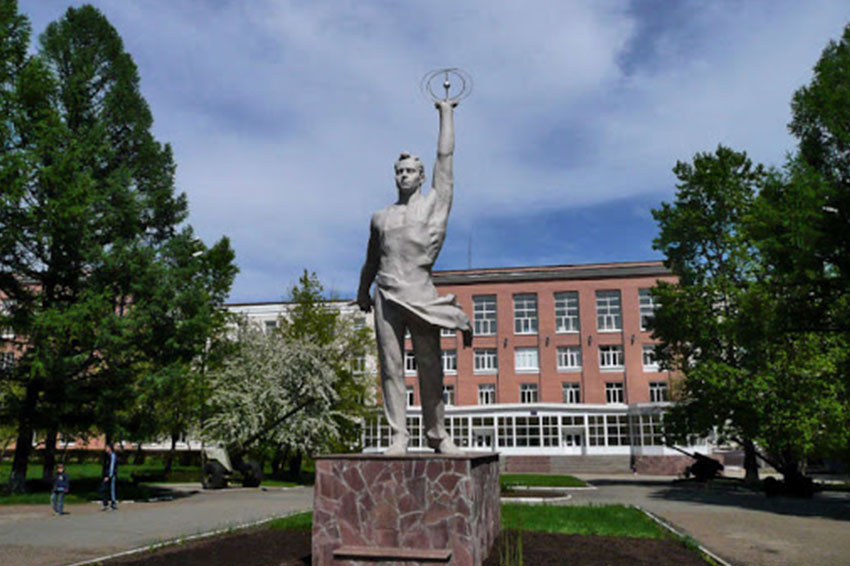
By the 1930s, the Izhevsk organization became the Chief Designer Bureau of the Soviet Union. Think of them as the claws on the big Russian bear.
Soviet arms designers with names like Simonov and Tokarev began designing new weapons.
Guns such as modified Mosins, the TT-33, the SVT-38/40 series, and many more were being made. Soon, Germany saw fit to enter Russia, and again the world learned an invasion of the Motherland in the winter was a fool’s errand.
The Second World War
During World War II, the German Invasion of the Soviet Union meant that Russia was now involved. This led to an arms race, with the factory producing more weapons than ever.
In fact, during the Great Patriotic War, Izhevsk Arms Plant No.74 made more weapons than it had in the previous 92 years combined.
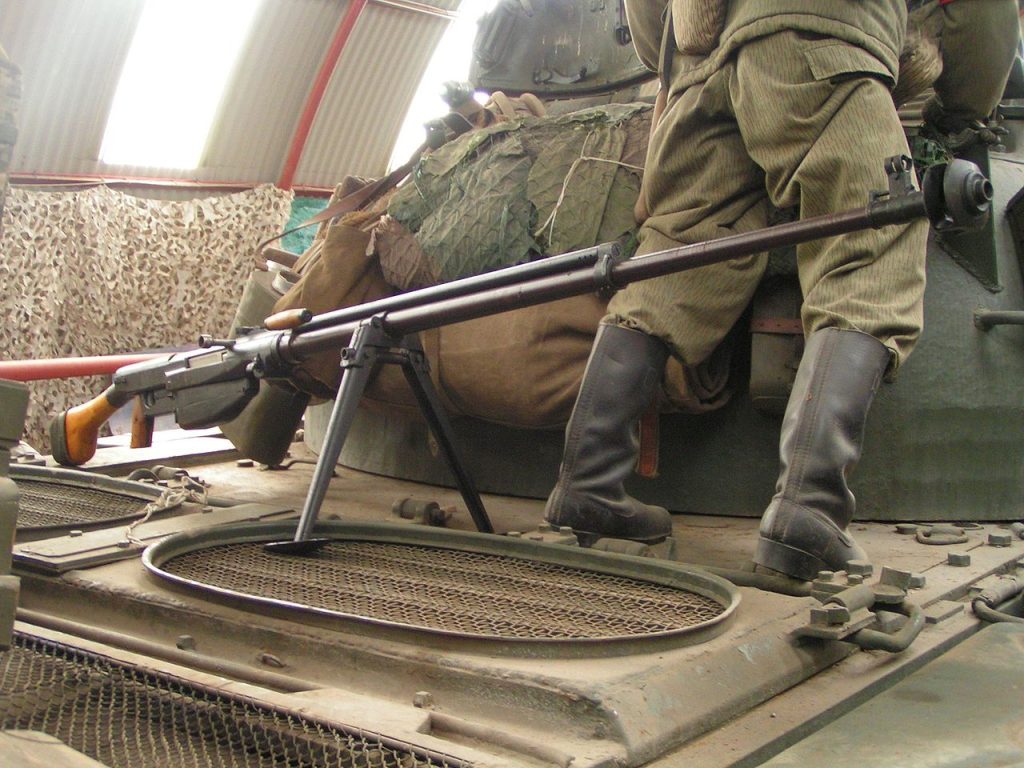
They churned out Mosin-Nagant rifles faster than the Amish churn butter.
Over 11 million rifles and carbines were produced, as well as 15,000 aircraft cannons and 132,000 anti-tank rifles. They even produced 81,900 Maxim machine guns from scratch.
Specific weapons include the aforementioned Mosin, the Nagant Revolver, and the TT-33. Simonov designed and produced the PTRS-41 anti-tank rifle at Izhevsk alongside the PTRD anti-tank rifle.
Enter the Kalashnikov
The Izhevsk factory was more than a simple arms factory. They created a barrier of steel and led that Russia relied on to defend their Motherland.
When the Tula and Podolsk factories fell, the Izhevsk factory’s output became even more critical for the war effort.
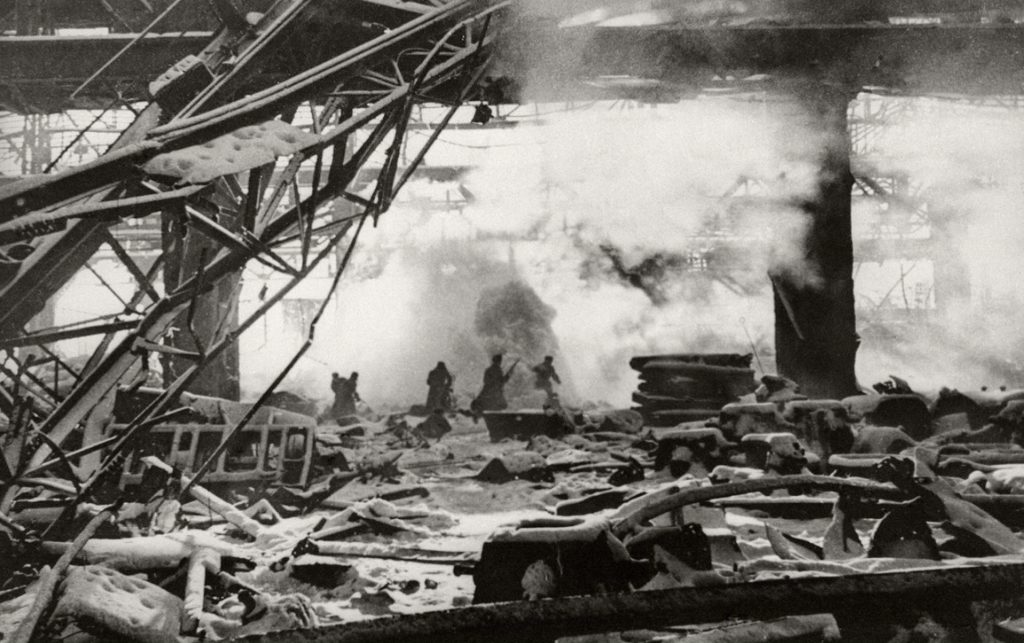
Right after the Second World War, the Cold War popped off. With the lessons learned from World War II, the Russian forces quickly realized that the assault rifle was the future.
Mikhail Kalashnikov & the AK-47
The plant hired an ex-tank mechanic Mikhail Kalashnikov. Mikhail had designed a submachine gun which got him noticed, but it wasn’t his first experience with small arms construction.
As a young man, he was a mechanic at a tractor station, gaining an excellent reputation for small repairs requiring precision and dexterity.
This reputation resulted in a party organizer issuing him a directive to work at a weapons design bureau.
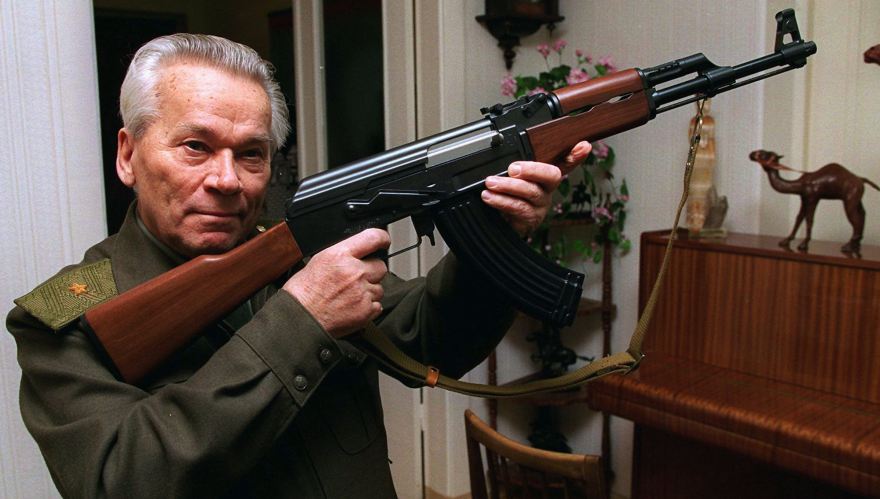
There he worked as a tester of fitting stocks to rifles.
In 1938 he was conscripted into the Red Army, where his history of mechanics brought him to the world of being a tank mechanic, later becoming a tank commander. While serving in the army, he developed a device that could count the shots from a tank’s gun and even a TT-33 pistol.
He received a watch from General Zhukov for inventing the device. Later after being wounded in battle, he began developing a submachine gun which would eventually become the AK-47.
Prices accurate at time of writing
Prices accurate at time of writing
-
25% off all OAKLEY products - OAKLEY25
Copied! Visit Merchant
The AK-47 Appears
In 1944 he designed a gas-operated carbine which lost out to the Simonov SKS. In 1946 he entered the assault rifle competition, and in 1947 the AK-47 became a reality.
Shortly after, the AKM simplified the original design, creating the most prolific assault rifle the world has ever seen.
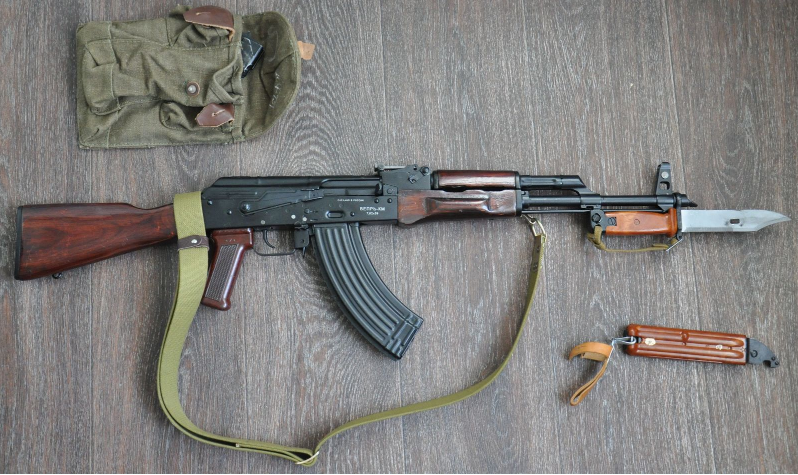
The AK-47 was developed and built at Izhevsk.
Outside of the AK series, the Izhevsk plant also produced very accurate and capable rifles that led the Soviet Union to numerous European and Olympic championships in this time period.
Kalashnikov remained at the facility and, over time, produced dozens of firearms, including the RPK, the PKM, the AK-74, and numerous other AK-based small arms.
Also present was Yevgeny Dragunov, who developed the short-stroke gas piston SVD sniper rifle.
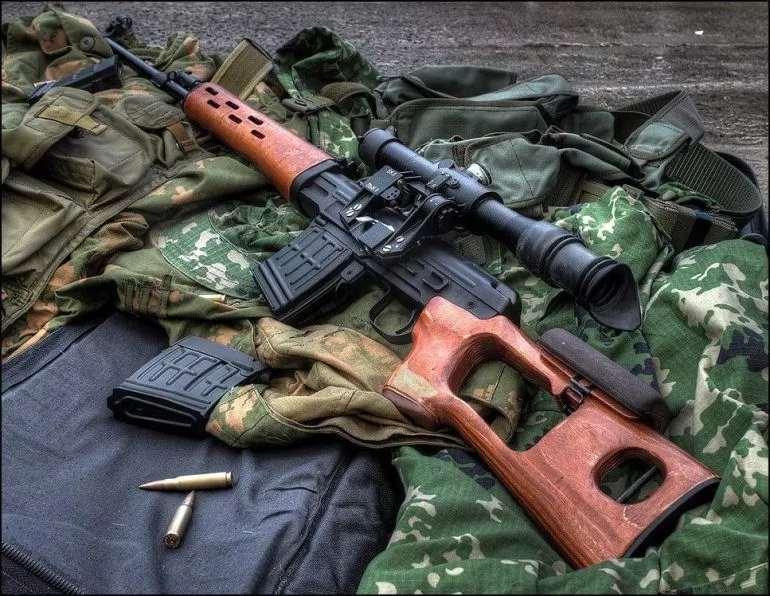
In 1975 the Izhevsk Machine Build Plant became the Izhmash Industrial Association, which leads us into the modern age.
Modern Times
With the collapse of the Soviet Union, the Izhmash facility struggled. The end of the Cold War meant a lesser need for guns, and western competition was growing.
What’s a company to do?
Well, they embraced the overseas export market for civilian shooters. Bringing Eastern weapons to a western market proved to be a solid move for the Izhmash facility.
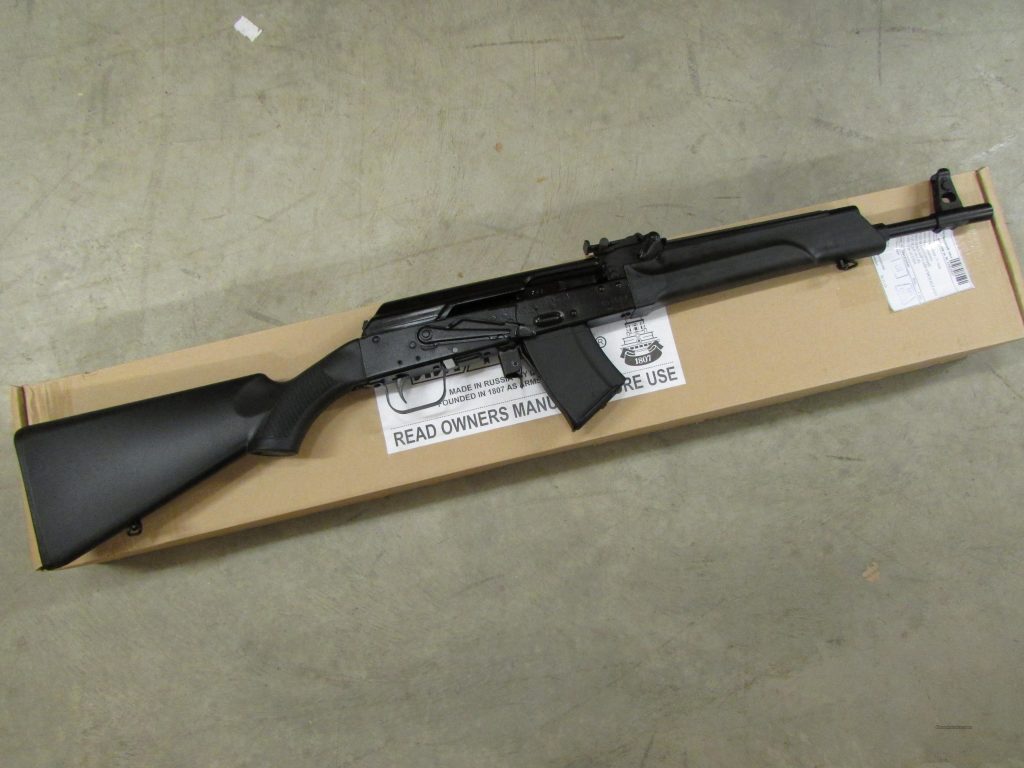
Tigr rifles and Saiga AK rifles and shotguns became quite popular, but it still wasn’t enough. The Izhmash facility was poorly managed and in serious debt.
It couldn’t be shut down as the military needed this massive facility for arms production. As such, Rostec, the Russian state-owned corporation, took control of Izhmash. They reorganized, consolidated, and began streamlining the company.
According to state-owned Rostec, they tripled the profits and cut costs by 10%. Is it true? Well, who knows, but we do know the facility still produces firearms and exports various guns.
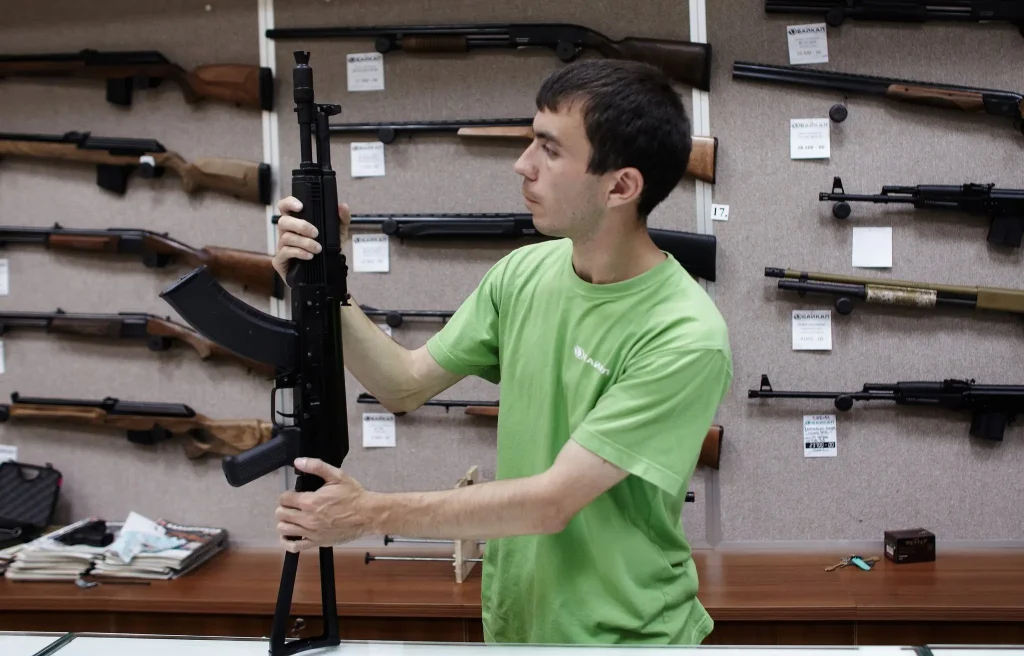
Heck, the entire AK-100 series of rifles were developed in the 1990s for exportation. They built 5.56 AKs and various modern 7.62x39mm guns for countries looking to upgrade their weaponry without going overboard.
Kalashnikov Concern Is Born
In 2013 the Izhmash and Izhmekh merged to form Kalashnikov Concern.
This Concern became a behemoth of arm’s design and production. It currently serves as an extremely important asset to the Russian Federation and is a profitable exporter of firearms.
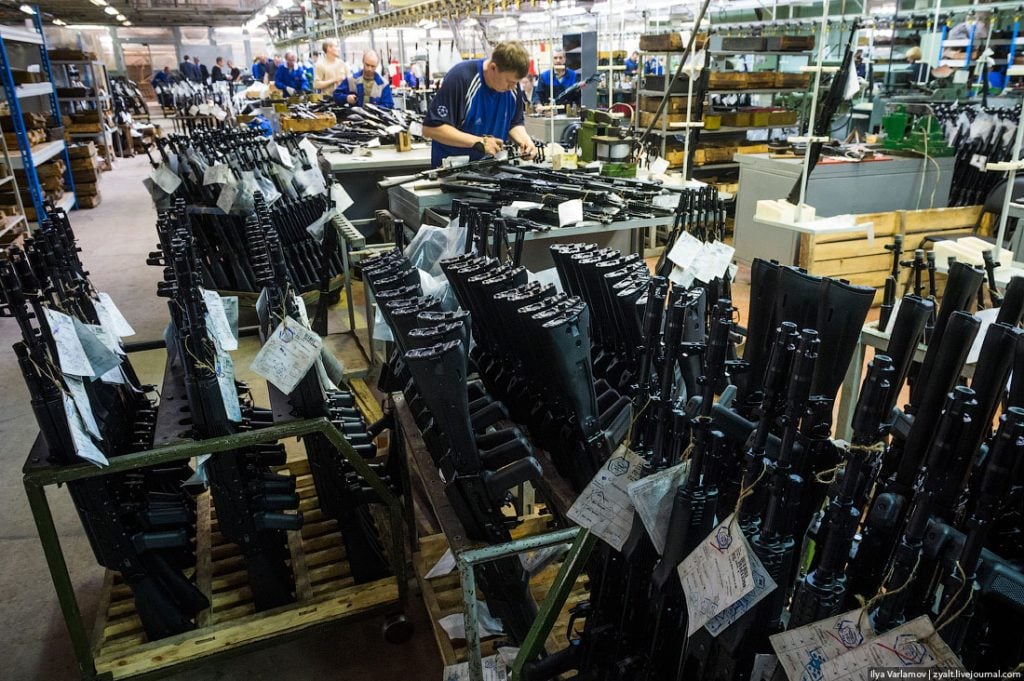
As we discussed, the Concern is made from three distinct companies. We have Kalashninkov, Baikal, and Izhmash. They are each in charge of producing their own series of weapons.
Kalashnikov produces the military firearms and vehicles used by Russia and for military exports.
Baikal produces firearms aimed at hunting and sporting purposes. Their double-barrel shotguns are extremely common and quite affordable throughout Europe.
Izhmash produces civilian and sporting variants of the Kalashnikov firearms.
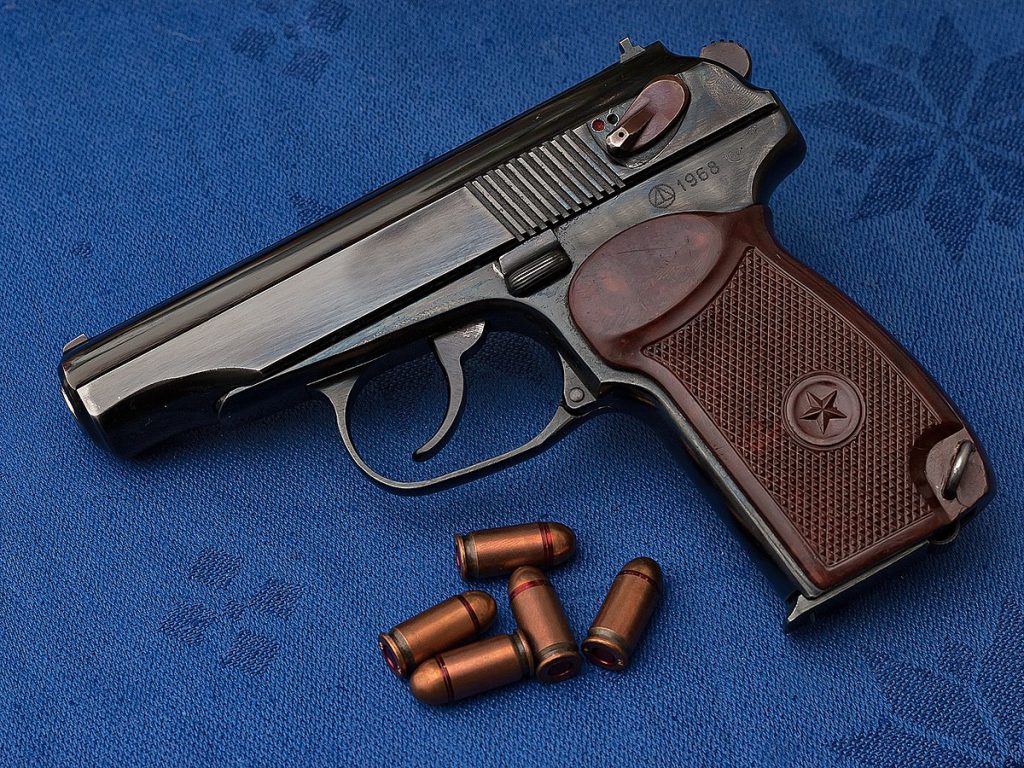
In 2014 the United States and the European Union sanctioned Kalashnikov Concern due to the Russian annexation of Crimea and the Ukrainian military intervention.
This stopped the flow of Russian imports into the US, creating a massive gap in the market.
The Birth of Kalashnikov USA
Nature abhors a vacuum, and the American market wanted Russian weapons. Thus, Kalashnikov USA (KUSA) was born.
Officially, KUSA has no connection to Kalashnikov Concern of Russia, but they suspiciously managed to be the only manufacturer to obtain the official Russian data packages for producing firearms.
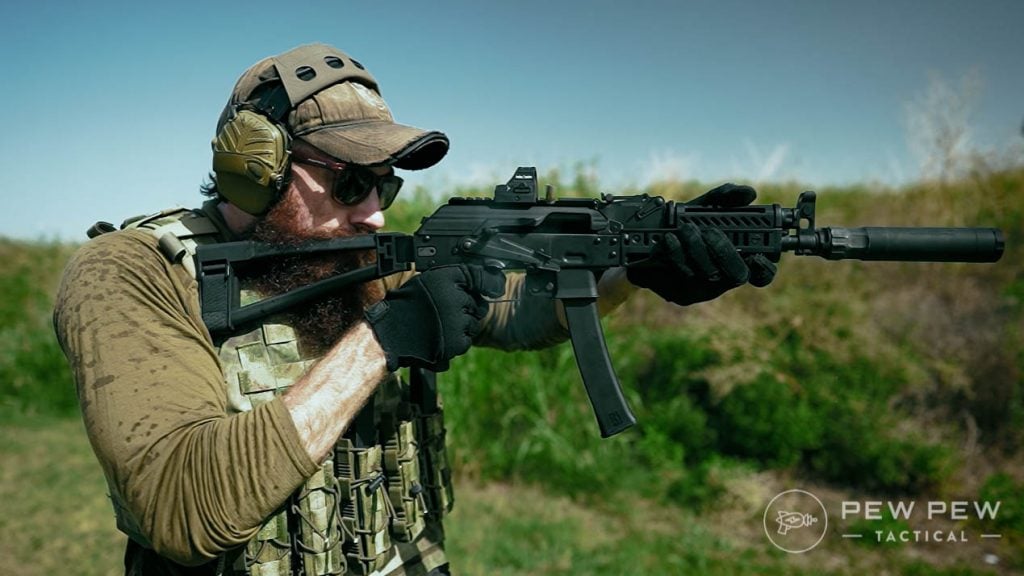
For the longest time, the company appeared to produce vaporware presented by fancy booths at SHOT Show. Guns like the AK Alpha, 9mm AKs, and AK shotguns were promised.
Only in the last few years have they released firearms, although some guns, like the AK Alpha, still seem to be vaporware.
Currently, they produce the 9mm KP-9, the Komrad 12 gauge, the KS-12 shotgun, and the KR-103 AK series rifle.
Prices accurate at time of writing
Prices accurate at time of writing
-
25% off all OAKLEY products - OAKLEY25
Copied! Visit Merchant
Initial production from KUSA produced mostly well-received firearms, with the exception of some teething issues with the Komrad. However, quality control issues have plagued KUSA as of late 2022 and early 2023.
Hopefully, Kalashnikov USA can overcome these issues and continue to bring quality Russian-style weapons and experiences to the American market.
Final Thoughts
Kalashnikov Concern still functions as the main arsenal of the Russian Federation. Impressively it’s seen the fall of the Empire, the rise and fall of the Soviet Union, and the rise and constant reelection of dictators.
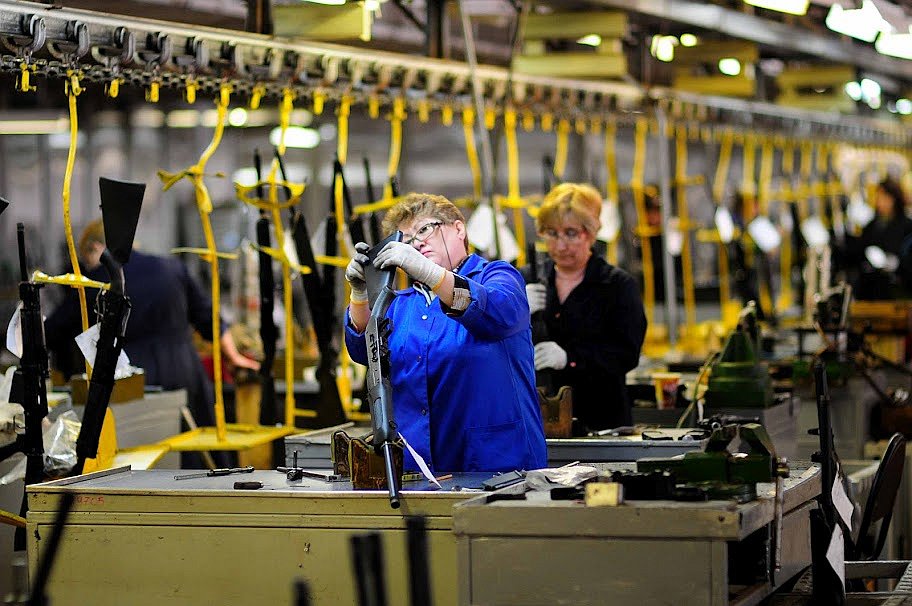
It churned out weapons at a near-constant state and outlived the United State’s own Springfield Armory…impressive to survive so much conflict and turmoil while retaining a legendary legacy.
What do you think about Kalashnikov Concern? Let us know in the comments below! Interested in learning more about Russian guns? Check out our article, Best Russian-Made Guns That Aren’t the AK-47.

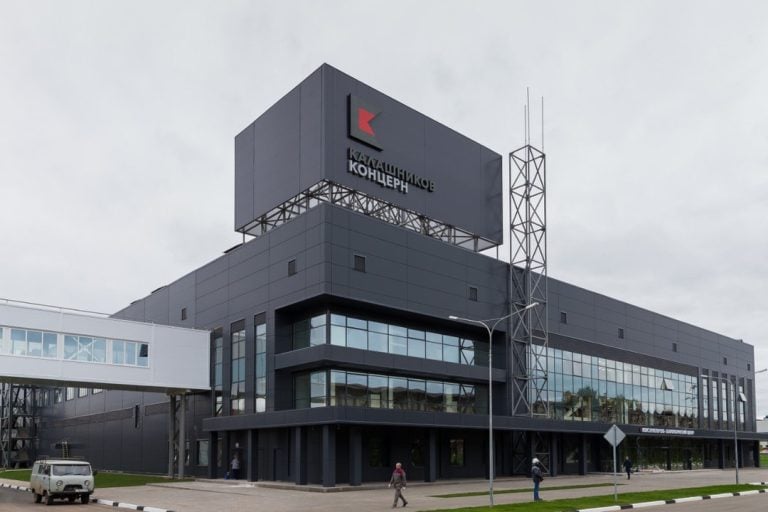
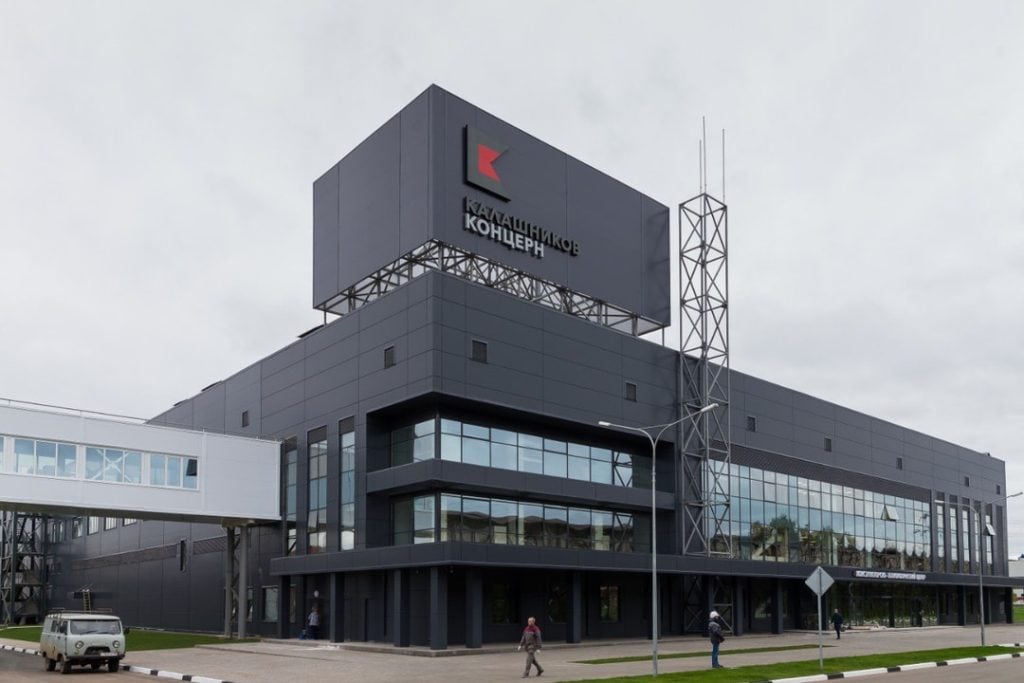









8 Leave a Reply
There is one historic fact this article does not mention. When the war ended in 1945, 25 year old Misha Kalashnikov was full of ideas but in reality had no inventions. His pre-war inventions are part of the Soviet myth. Witnessing the great weaponry German, American, British, French and Italian used, the USSR needed a new modern rifle of their own and a young, 100 percent Russian worker hero designer. How Misha was selected for this position remains a mistery, but what is known that he was put in charge of a group of captured German small arms engineers and designers including ones who worked on Sturmgewehr 44. Captured German engineers and their families were forced to work in captivity under Misha's supervision in Izhevsk and, after a couple of years of their work, Misha was proclaimed a designer of AK-47. Again, Stalin needed a young hero designer, a war veteran, and so the myth was made. Some of captured German engineers were allowed to leave Russia and return to Germany only at their very old age, decades after the war ended. One of them, who was released by the Soviets because of his cancer diagnosis, left notes about it. We are brave enough to admit the engineering genius of Wernher von Braun and his team of captured German engineers as well as their role in the American space program. But to this day almost nobody wants to mention captured German engineers who were true designers of what was later became known as AK-47, an excellent assault rifle which is viewed by many as successfully simplified descendant of Sturmgewehr 44.
Your info is as interesting as the upper article was.
Good Historic Article Travis. You gave a lot of detail in a short space.
When I decided to get a MSR, during Obitthead's 2nd Term when it looked like an AWB was coming (I believe it would have had Hillary been elected), I debated between an AR or and AK. Ultimately I chose the AR due to the Ammo. I can remember earlier ComBloc Ammo bans, and knew it only takes a political whim to start a new ban, so I decided 5.56 would be easier to find and not effected by sanctions.
AKs run under very poor conditions, but accuracy is sacrificed. An AK a buddy owns, is Minute of Bad Guy accurate, but my AR blows his AK away accuracy wise.
Good Job and please keep writing. As a closet amateur historian, I enjoy the historical pieces. Arms and Armaments from 1840 to 1920 are what I've spent the majority of my study and research, as I find the history of both the transition from Flintlick to Percussion Cap to Metallic Cartridge, and Black Powder to Nitro-Cellulose Powders flat out fascinating to explore.
Great article and fascinating history. I bought a Hebrew hammer and enjoy learning more about it’s origins.
Interesting read. That said, I'll stick with my ARs and all they stand for...
Absolutely loved this article. Please keep'em coming.
So buying holosun is bad because it supports china but let’s all support Russian companies? Hard pass for me
Nevermind the political hypocrisy. The recent war of aggression by Russia is demonstrating that the manufacturing standards in the nation are slipping - even the vaunted AK is malfunctioning.
Meanwhile, there are perfectly good Serbian AKs made by Zastava that are holding up.